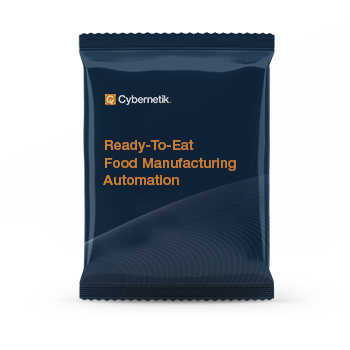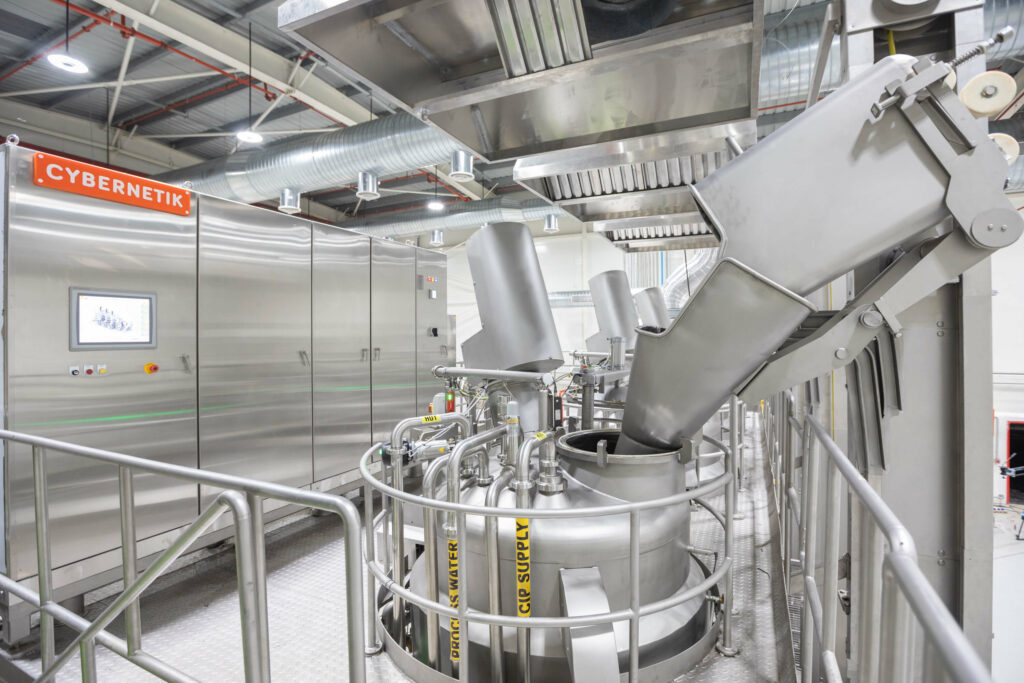Industrial Cooking Kettles are among the fundamental equipment in food processing [1]. These enable heat treatment of a broad array of food products at elevated temperatures and pressures. Food, beverage and dairy sectors utilize them for cooking and mixing [2]. Available in multiple sizes, large food factories find them as useful as small restaurants [3].
High pressure inside cooking kettles delivers distinct advantages. It boosts the safety and shelf life of food products while retaining nutrients and minimizing energy costs [4]. That apart, high pressure shortens cooking times, imparts better odor and taste to the food product, and maintains its catchy appearance [5].



The future
of automation is here.
Cooking kettles are utilized to:
Pressure cooking via kettles makes delicious sauces by dissolving caramelized and mallaird-ized products back into the main stock [2]. Baby foods, ketchups, marmalades, chutneys, confectionaries, custards, jams, gravies, syrups, pet food, aseptic fruits, mayonnaise, preserves, and fruit jellies can all be produced by cooking kettles [2].
These are best suited for preparing and stewing meat, legumes, vegetables, and cereals [5]. Rice, pasta, beans, stew, sauces, gravy, soup, desserts, and stocks – all are cooked [6]. Cooking kettles also simmer or slow boil beans, stocks, and soups to lower their liquid content [6].
Most cooking kettles include one vessel inside another vessel. The vacant space between the two vessels is the steam jacket, into which steam is directed. Steam condenses and releases heat to the walls of the inner vessel. The inner vessel houses the food products which receive this heat from condensing steam via conduction [7].
Cooking kettles also operate the other way round. When ice water or cold water is circulated through the steam jacket, they cool down warm or hot foods. In this reverse mode, they work to mix cold salads [7].
Types of cooking kettles based on the energy source are:
Both types are available in the tilting or stationary type. The former can rotate about a horizontal axis allowing the pouring out of the finished food product. Stationary types have a sanitary drain valve to remove the prepared foodstuffs.

Here are general design and operational guidelines for steam kettles:
Direct steam kettles cook faster, are more efficient, and possess greater capacity than self contained kettles [6]. Plus, they are cheaper and simpler [8]. However, self contained kettles are easier to maintain and more flexible for they can integrate with gas or electric supply [8]. Large food processing plants with boilers prefer direct steam kettles while small food factories go for self contained kettles [3].
Uniform heating of food is a very useful feature of all cooking kettles, direct steam or self contained. This is because the jacket surrounds a large part of the kettle. Steam jackets of most kettles engulf 2/3rd of their surface area [6]. Fully jacketed kettles are also available [6].
Large jacketed area exposes greater surface area for heat transfer, thereby delivering uniform cooking with lesser energy and higher efficiency. Again, precise temperature control via the steam control valve avoids overcooking [2]. Temperature range differs and can be between 267 and 3380F [6]. Some operate from 212 to 3000F [10].
Mixer/agitator is another component that ensures uniform heating. Many mixers move the food vertically and horizontally for thorough blending. The mixer arms have scrappers at their ends to prevent food from sticking to the sides and burning [2]. Such burned food may obstruct heat conduction. Smooth internal surfaces also deter sticking.
Steam temperature rises with increasing steam jacket pressure [3]. Applying equal pressure from all directions (isostatic pressing) denatures proteins while eliminating microorganisms [4]. Denatured proteins are easily digested [11]. In short, isostatic pressing improves the safety, quality, and shelf life of food products. Maximum pressure rating of most cooking kettles runs from 35 to 50 psi [3], although 150psi is not unknown [12].
Load cells available with cooking kettles guarantee consistent quality production by providing an accurate weighing system [2]. Heat deflector shields safeguard personnel from heat-related burns [6].

Tell tale signs that a kettle needs replacement include:
Here are a few maintenance tips that improve the service life and safety of the cooking kettle [6]:
Finally
In a way, cooking kettles are sophisticated versions of the humble pressure cooker. But their merits transcend the mere saving of cooking time and energy. It is precisely these advantages that explain their immense popularity.
Cybernetik has been manufacturing equipment and delivering automation solutions for the Food, Pharma, and Agriculture sectors since decades. Contact us at +91 20 6790 9600 or [email protected] to experience the power of seasoned experience.
References